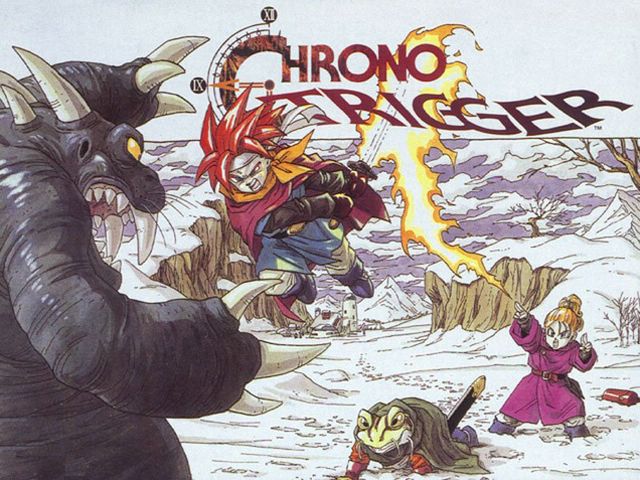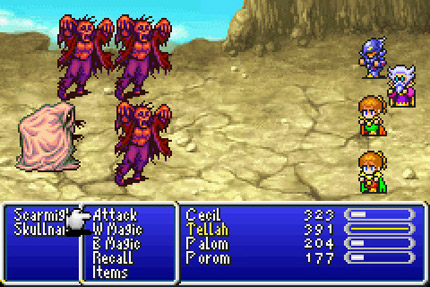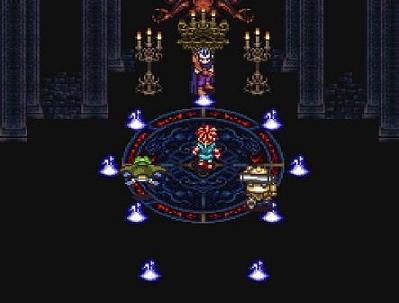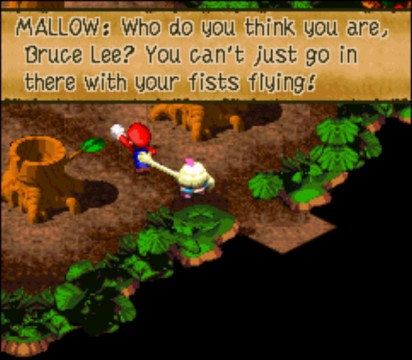
For one reason or another, the 16-bit generation of consoles is perhaps most fondly remembered by a significant chunk of the gaming population. It could be that millions of people consider it the best simply because it was the generation that got them into gaming, or perhaps it could be that it really did have the best selection of games. I happen to belong to the aforementioned group; a SNES was waiting under the Christmas tree in 1991 and that gray box is what made me a gamer, but I am not a fan of nostalgia. I always try to look at everything objectively, so I am hesitant to label the 16-bit era the best ever. However, I do make an exception for one genre– RPGs.
To be honest, I would argue that most genres have improved significantly over the years. Yes, plenty of old school games remain incredibly entertaining, but nine times out of ten I would rather play Mario Galaxy 2 than Mario Sunshine, Mario 64, Super Mario World, or Super Mario Bros. The same goes for just about about every other genre. Where RPGs differ is that the pillar of a strong game doesn’t lie in any mechanical or aesthetic properties that can benefit solely from more advanced hardware. A good RPG needs only a solid battle system and a stellar story, though if the latter is strong enough, everything else becomes significantly less important. Since all of this could be accomplished with hardware even less powerful than the SNES, why didn’t earlier RPGs reach the same level of quality? The answer to this is quite simple: memory. NES cartridges simply couldn’t store the data necessary to create experiences much more complex and intensive than the likes of Final Fantasy, Dragon Quest and Mother.
Looking at the technological advancements from NES to SNES might not seem too impressive now, but it was quite a leap for the time, and the extra processing power and memory allowed games to become substantially larger and more detailed. The first major RPG for SNES was Final Fantasy IV (originally released in North America as FFII), and while the franchise had been working towards developing stronger stories in prior entries, IV was the first to truly emphasize the plot as the game’s main focus. Also, the system’s better graphical abilities also contributed to creating a much larger and more varied game world that expanded across multiple “world maps.” The end result was a game significantly bigger and better in just about every imaginable way and marked a great start to the generation for Square, which would emerge as the RPG kings of SNES.

The next big Square RPG to find its way to American shores was Final Fantasy VI (released as FFIII) and it would turn out to be the pinnacle of the franchise. Like IV, this entry would keep the focus on the story but also did a great deal more with character development, a feat made all the more impressive by the fact it had by far the largest cast of the entire series– including 14 playable characters. The game’s mechanics were equally impressive thanks to one of the most unique and strategic magic and customization systems ever to grace a Final Fantasy game. Yet what ultimately makes FFVI is the fact that all of these elements are masterfully crafted and put together like a fine watch, creating an incredible experience that easily stands as the best in the series.
The next big RPG to grace SNES came from Nintendo, and it was called Earthbound. I have already written more than a bit on this gem, but one can never give Earthbound enough love. While FFVI focused on a huge cast of characters waging an epic struggle around the globe, Earthbound took a much simpler approach, relying on a small group of heroes and older, simpler mechanics. Where Earthbound makes its mark in the realm of sheer, hilarious insanity; the modern setting is given a coat of weird quirkiness and the writing covers the entire spectrum of humor, from potty jokes to clever word play. Unlike the Final Fantasy games, Earthbound didn’t earn immediate popularity, ultimately making it a hard to find, cult hit among dedicated RPG fans.

Continuing their near flawless streak, Square released Chrono Trigger in 1996, and while Final Fantasy VI marked the pinnacle of the that franchise, Chrono Trigger marked the pinnacle of the genre. Chrono Trigger was the product of an all-star team of designers, comprising some of the best developers, artists, and composers with prior experience working on both Final Fantasy and Dragon Quest, the two titans of the genre. The game was more focused than Final Fantasy VI, allowing the characters and locations to be better developed, both in terms of writing and design. The story also offered up a drastically different experience, one that centered around time travel and several different eras featuring unique characters, locales, cultures and subplots. However, the game’s greatest accomplishment was its flow; no other RPG moved along at such a fast and enjoyable pace, while still making room for side quests and other diversions. Furthermore, Chrono Trigger was one of the first RPGs to utilize multiple endings based on a multitude of criteria from throughout the adventure, and the game also pulls off one of the biggest surprise twists of the generation.
The SNES era of RPG dominance closed out with yet another amazing title, and this time it was a collaborative effort between Nintendo and Square. Super Mario RPG was an amazing game that did more than just present an amazingly entertaining and well-crafted story filled with new and likable characters in a franchise not well known for those factors, but it also innovated in a variety of clever ways. Mario has always been known for his jumping and Square did a great job of implementing those elements while also tweaking the traditional RPG elements to make the final product appealing for both Mario and RPG fans. The great, isometric graphics and quality music that both Nintendo and Square are well known for also contributed towards making this an outstanding game. All things considered, these elements made Super Mario RPG a satisfying conclusion to the era.

While the aforementioned games stand out to me as the cream of an amazingly bountiful crop, there are a plethora of other RPGs that helped make SNES the juggernaut of the genre. Capcom, a company better known for action titles, earned some major RPG cred with Breath of Fire I and II. The Lufia games were also solid games and featured great puzzle elements generally left out of the genre. Action RPG fans were also given great choices with games like Secret of Mana from Square and Illusion of Gaia from Enix. Of course, all of the games mentioned throughout this article have one thing in common: they came out in North America. If Japanese games were included, the list of must-play RPGs would probably double, with many more games form Square and Enix, including Dragon Quest games, which didn’t see much American support until the release of Dragon Quest VIII on PS2.
As for why more recent RPGs fail to live up to the games of the 16-bit era, there are a multitude of reasons. A lot of modern titles are dragged down by a slew of genre cliches, (secret princesses, amnesia, silent heroes, etc.) and while many of these elements are present in the classic titles, it was these games that actually turned them into what we now consider cliches. Terra’s amnesia in Final Fantasy VI wasn’t a tired, plot device; it was a major element that when unraveled revealed several shocking facts that acted as a catalyst for driving the story forward. Also, the inability to rely on flashy cut scenes to entertain the player forced developers to pay more attention to the story and characters as a means of creating compelling entertainment. This doesn’t make modern RPGs bad by any stretch of the imagination, plenty of games are perfectly passable, several developers really do try to innovate, and more and more games are doing their best to embrace the elements that made the older games so appealing. The last two reasons are probably why Final Fantasy has been losing fans over the last several iterations, while Dragon Quest IX and the Shin Megami Tensei series have been succeeding.
Of course all of this is my opinion; the numerous games I listed stood out in my memory and the reasons why I enjoyed them only scratch the surface of why they are worth checking out. Realistically, I probably could write an entire article on each, and for some of them, I already have! On a positive note for the future of the genre, DS has been a great RPG system, with plenty of great titles that innovate while harkening back to classic RPG elements. Just a few worth checking out include The World Ends With You, Sands of Destruction, and Shin Megami Tensei: Strange Journey and Devil Survivor. If you can think of any great RPGs, new or classic, that I might have missed or want to chime in on what you think makes and RPG great, please tell us in the comments section.




 ShareThis
ShareThis







Pretty comprehensive list. That generation of RPGs were good for a lot of reasons, but I think that the two biggest were combat and story. Some of them had some really engrossing combat systems (Chrono Trigger stands out to me) while almost every game you listed had a truly captivating, emotional storyline. That sort of heart is sometimes absent in more modern role playing games.
Earthbound and Super Mario RPG are my top favorite SNES RPGs. So much awesomeness.
Great article, Andy. I agree that DS has been the system for RPGs, especially considering the handheld has ports of most of the games mentioned above (if you consider GBA remakes of Final Fantasy VI and the like). I’m curious, though, if RPGs will ever be a mainstay on the home consoles again.
As a kid I was mostly into platformers so I didn’t delve to deeply into the SNES RPG pile back then, outside of my most favorite of all RPGs EarthBound that is.
But now older, wiser (debatable) and with my own money I am working on fixing that with the used market and the VC.
The SNES era of RPG’s was definitely the most memorable, and best ever, PERIOD. Sure the PSX came close (maybe), but when you include the SNES titles that never came to American (ala Terranigma, Treasure of the Rudra’s, Secret of Mana 2, Star Ocean) then the SNES without a doubt not only becomes the greatest RPG console of all time, but it already is the greatest console of all time for platformers, adventures, etc. Long live the once greatness of Nintendo.
I really think that you’re underselling the DS right now. I mean, yeah SNES was the best thanks in no small part to the sheer number of good Square RPGs, but I think the DS is my pick for second best at the moment thanks to the renaissance we’re seeing with the stellar titles released for it. They’re titles that don’t have to hyper-charge everything with FMV-visuals to sell games, something that the SNES proved back when those were unfeasible thanks to memory issues. As cinematic as RPGs have become, I wonder if that’s actually a bad thing.
Sands of Destruction, really? I kind of found that terribly bland– if not all-out tedious, when it came to the battle system. I mean, I guess it was … sort of okay? If I wanted to be masochistic?
I actually really enjoyed the story having the whole premise turned upside down and found the battle system and presentation to be at least a little above average.